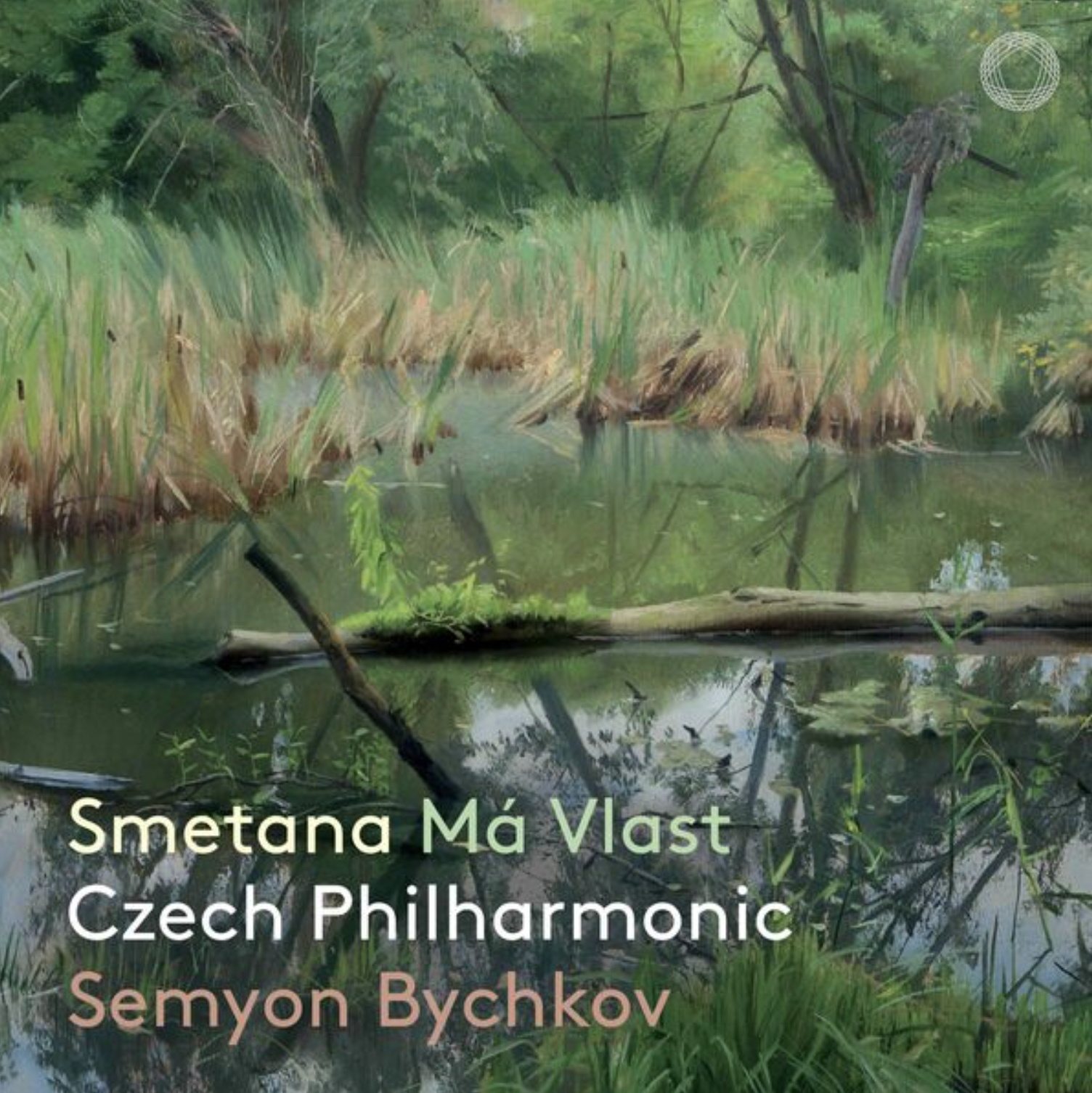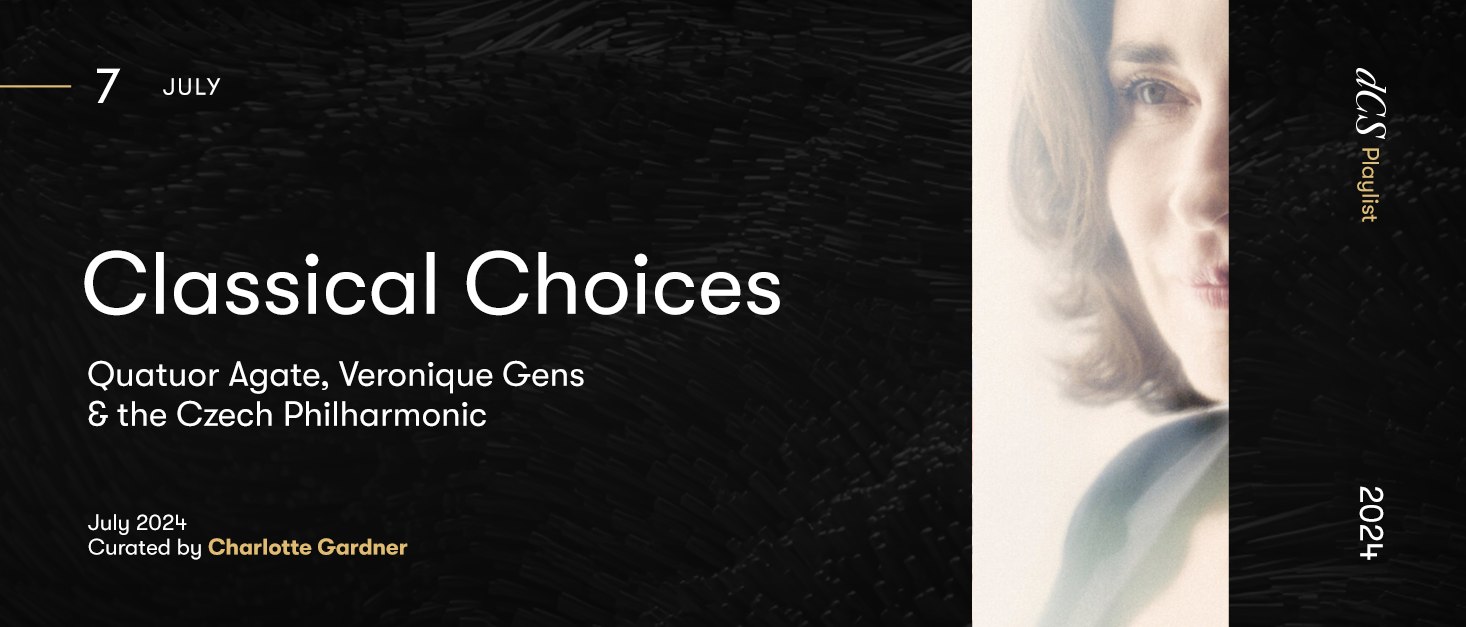Welcome to July’s Classical Choices! Our last playlist opened with an archive recording selected to honour the opening of the BBC Proms. This month, we are turning our focus to Switzerland and the Verbier Festival, with a new release from Deutsche Grammophon’s Verbier Festival Gold series. The Gold series presents classic recordings of performances recorded live over Verbier’s 30 years. Its new release, Mischa Maisky in Verbier, is a tribute to one of the festival’s most familiar faces - I’ve chosen the first track, Maisky’s soulful reading of Bruch’s Kol Nidrei with the Verbier Festival Chamber Orchestra, to open.
There’s also a Verbier connection to one of this month’s new releases. The young French group Quatuor Agate, whose stunning Brahms cycle I’m slightly belatedly slipping in, is a former Verbier Academy prizewinner. Alongside this we have Smetana’s Má Vlast from the Czech Philharmonic Orchestra under its Music Director Semyon Bychkov, and a programme of orchestra-accompanied French Romantic songs from soprano Veronique Gens with the Munich Radio Orchestra under Hervé Niquet.

Smetana Má Vlast
Czech Philharmonic Orchestra, Semyon Bychkov
Pentatone
It’s almost impossible to downplay the significance within Czech culture of the six symphonic poems that constitute Bedřich Smetana’s Má Vlast (My Fatherland). Composed between 1874 and 1878, just after he succumbed to sudden and permanent deafness, it is couched in the recognisably Czech musical language that Smetana pioneered. Its musical narrative traces the course of the Moldau river as it travels from the Bohemian forest to and through the then-Habsburg-ruled city of Prague, to which he dedicated the work. Embraced by city and nation, it became a symbol for the Czech national movement, and has opened the world-famous Prague Spring Festival each year since 1952.
A new recording from the Czech Philharmonic and its Chief Conductor and Music Director Semyon Bychkov marks both the bicentenary of Smetana’s birth, and the Year of Czech Music – a celebration which has taken place every ten years since Smetana’s 100th birthday in 1924. Bychkov – a Russian who emigrated to the US, and now lives in France – doesn’t have quite the same ties to Má Vlast as the Czech Philharmonic’s players, but he can bring his own bittersweet understanding of ‘fatherland’, and this is perhaps what makes this reading so very special.
‘Vysehrad’ (The High Castle) opens meltingly soft and spacious. Its ‘bard’s’ harp solo is imbued with a storytelling mystery, after which comes a deftly paced crescendo in momentum, drama and sparkle, with wonderfully crisply articulated rhythms and a brightly ringing optimism. For another brilliantly slow-grown build in pace and drama, head to ‘Tabor’.
The ‘Vlatava’ is, in a word, glorious. There’s melodic glide; a lilting freshness, ebb and flow; crisp rhythmic definition; technicolour handling of its accenting and hairpin swells; a central polka of proud, light spring, and the St John Rapids churning with exhilarating force. Time suddenly seems to hang suspended and a ravishing cooler lucidity emerges as we move into the wood nymphs at moonlight (listen around 5’50”), with its many transitions between tempi and tones happening naturally and organically. There are various fabulous woodwind moments to notice and admire - essentially, the whole piece sounds both newly minted and vital.
I’ve given you ‘Vysehrad’ and ‘Vlatava’ for the playlist.

Brahms Quartets
Quatuor Agate
Le label
The young French group Quatuor Agate – made up of violinists Adrien Jurkovic and Thomas Descamps, violist Raphaël Pagnon and cellist Simon Iachemet – took its name from Agathe von Siebold, who had a romantic relationship with Johannes Brahms during Brahms’ late twenties (an experience that inspired several of his works). Brahms was the first composer the Agate played together, and he remains a constant focus for the group’s fascination. It was a bold move to devote their debut recording to a Brahms quartets cycle, but a wise one, confirmed by equally bold performances that are capable of standing proud alongside the best.
There’s a fabulously cleanly articulated, dramatic and tonal intensity to Agate’s sound across these three works. But equally, there’s no one single sound. There are consistent features – such as the fabulous mix of rhythmic precision and lyric freedom; solo flair versus group blend; taut harmonic awareness, first violin portamenti of all colours and speeds, and the ability to build a fevered dramatic crescendo – but their approach is constantly shifting, whilst speaking eloquently of the fascination with Brahms, his world and his multiple influences.
The ghost of Schubert and Beethoven hover very audibly over their voicing in the First Quartet reading, alternating and melding especially enjoyably over the third movement. Further pleasures include the way Agate work drama and mood through varying degrees of vibrato, or indeed the complete removal of it, and the way their tonal range spans from slender luminosity to cloaked, rich-toned depth. To pull some of the above together by way of some examples, compare the bright, sharp-edged, vibrato-less swish and fire with which they open the First Quartet with the softer, more vibrato’d, fluidly luminous violin blend and languid portamenti at the outset of the Second Quartet – and how that then moves towards vibrato-less bleakness at phrase’s end.
Other arresting moments include the throbbing-vibrato’d luminous sweetness colouring the First’s finale at 4’25”; the harsh, 3D definition of the tremolo in the Second’s second movement central section; the urgent rhythmic swing of the Second’s finale, and its lovingly close, liberated-feeling duetting between first violin and cello (which the fine engineering leaves you in no danger of missing). Also to be enjoyed are the personality-rich cello solos that appear in various places, including the Haydn-breathed Third’s final theme and variations; and last but not least, the combination of deep, wide, earthily stringy resonance and delicately lucid freewheeling rhapsody they bring to their parting gift: their own transcription of Brahms’s Romance No 5 in F major, Op 118, which has been a concert encore of theirs for a long time. (Musicians can head to their website and download its score.) I’ve given you the First Quartet plus the Romanze for the playlist.

Paysage
Veronique Gens, Munich Radio Orchestra, Hervé Niquet
Alpha
The paysages, or landscapes, of this sublime vocal recital from Gramophone’s 2023 Artist of the Year, French soprano Veronique Gens, are both literal and metaphorical. Gens’ programme presents a slightly less trodden area of French vocal terrain: French Romantic songs with orchestral accompaniment. While there is the occasional familiar piece, such as Fauré’s ‘Clair de lune’ (gorgeously sung here), the programme’s real USP is its treasure trove of more rarely heard mélodies by names such as Chausson, Gounod and Debois. These are punctuated at intervals by equally under-the-radar instrumental pieces from Massenet, Fauré and Fernand de La Tombelle. The literal element comes from the collection’s subject matter, traversing regions from Brittany (in the Reynaldo Hahn title song), to Persia (Saint-Saëns’s ‘La Splendeur vide’) and Byzantium (Massenet’s ‘Esclarmlonde’).
These songs, in all their variety, couldn’t have hoped for a better showcase than through Gens’s warmly rounded tonal clarity, crisp diction and ability to bring a text to expressive life, or the similarly evocative accounts from the Munich Radio Orchestra with its silky strings, pearly soft flutes and piquant reeds. Take the way they bring out the nuances within Chausson’s wistfully prayerful ‘Les Morts’, its blank verse proclaiming that the dead are not truly dead while they remain living in others’ memory, as melancholic harmonies spin a contrasting story of acute loss.
By contrast, Gounod’s playful ‘La Fauvette’ (‘The Warbler’), which narrates how the shepherd Myrtil captures a songbird to gift to the shepherdess he loves, loses it, but gets his girl anyway, trips lightly along with all the carefree, bright-toned charm you could hope for, including a beautifully blithe concluding flute solo, after which comes the brief instrumental Pastorale from Massenet’s Esclarmonde, its own woodwind solo song underpinned by a folky orchestral drone. All this ensures you’re fully attuned to the woodwind birdsong weaving around Gens’s voice in the ensuing ‘Blancheurs d’ailes’ (Wings’ Whiteness) from Dubois’s Musique sur l’eau. For orchestral highlights, try Massenet’s Invocation with its elegiac cello solo, written as incidental music to Leconte de Lisle’s Greek-tragedy-style play, Les Érinnyes, to accompany Electra’s lament at her father’s grave.
You’ll find the album’s first four songs on this month’s playlist: Dubois’s ‘Celui que j’aime’ and ‘Petits rêves d’enfant’, Reynaldo Hahn’s ‘Paysage’ and Fauré’s Clair de lune; then Massenet’s Invocation and Chausson’s ‘Les Morts’.


















